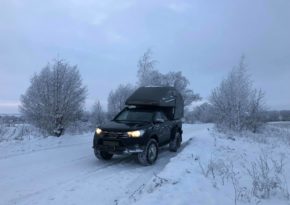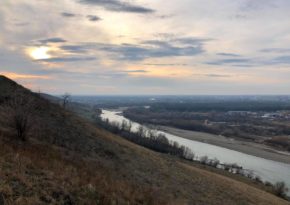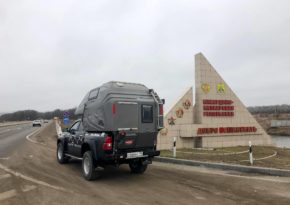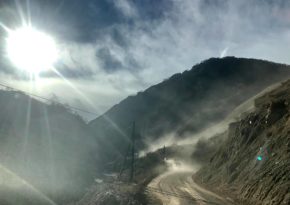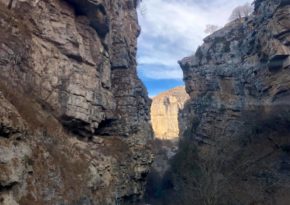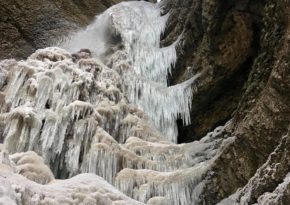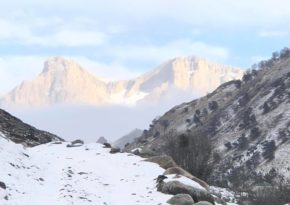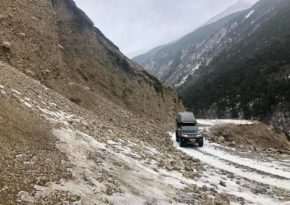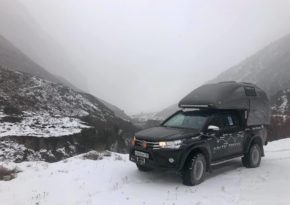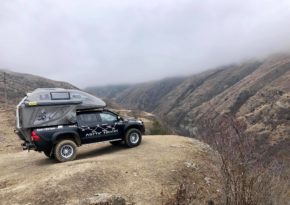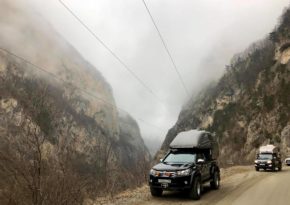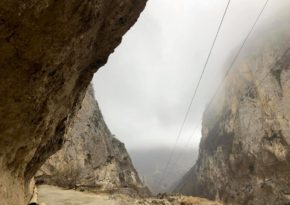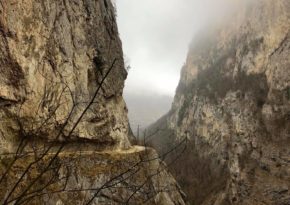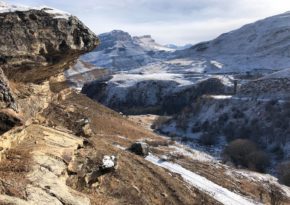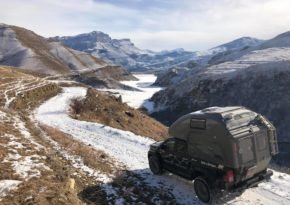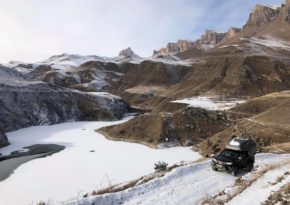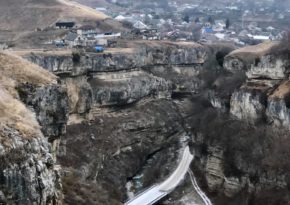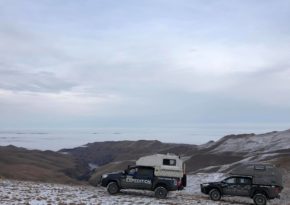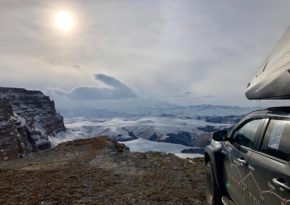A car journey across the Northern Caucasus. Kabardino-Balkaria.
While all the residents of Russia are having one more portion of the New Year's olivier salad, we got from snow-covered Moscow, passed the green fields of the Kuban and reached the mountain serpentines of Kabardino-Balkaria in order to take part in the festival "Dawns of the Caucasus, 2019".
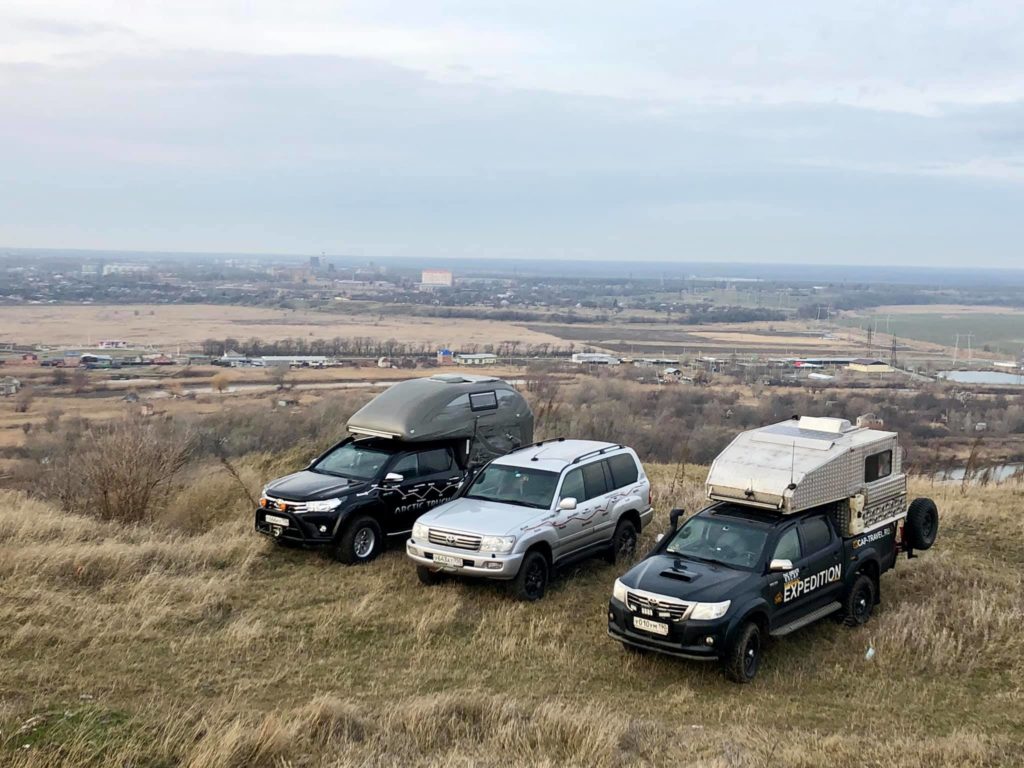
Tomorrow we are going to have an unusual adventure along the most beautiful gorges and mountain trails of the KBR and North Ossetia together with the local club of off-road driving fans named "KBR4x4". I hope that we didn't go for it in vain! Let's see what the winter in the Caucasus is like!
My heavy Toyota Hilux SUV (with a hundred and fifty-horsepower diesel engine) was slowly climbing up the rocky serpentine of the Chegem Gorge, rumbling hard. The indicators on the navigator display showed that we exceeded the altitude of 2000 metres.
A narrow snow-covered road, winding along the very edge of the abyss, led our chain of cars to the top of the Caucasian ridge and the border with Georgia. There, behind the white rocky peaks, just a few kilometres away, a mountainous region of Georgia called Svaneti is located. I have not reached it yet, but I'm going to do it later and approach it from the opposite side of the ridge. We are in the border zone, therefore, there is no opportunity to just ride and walk everywhere (only if you have your pass issued by prior request).
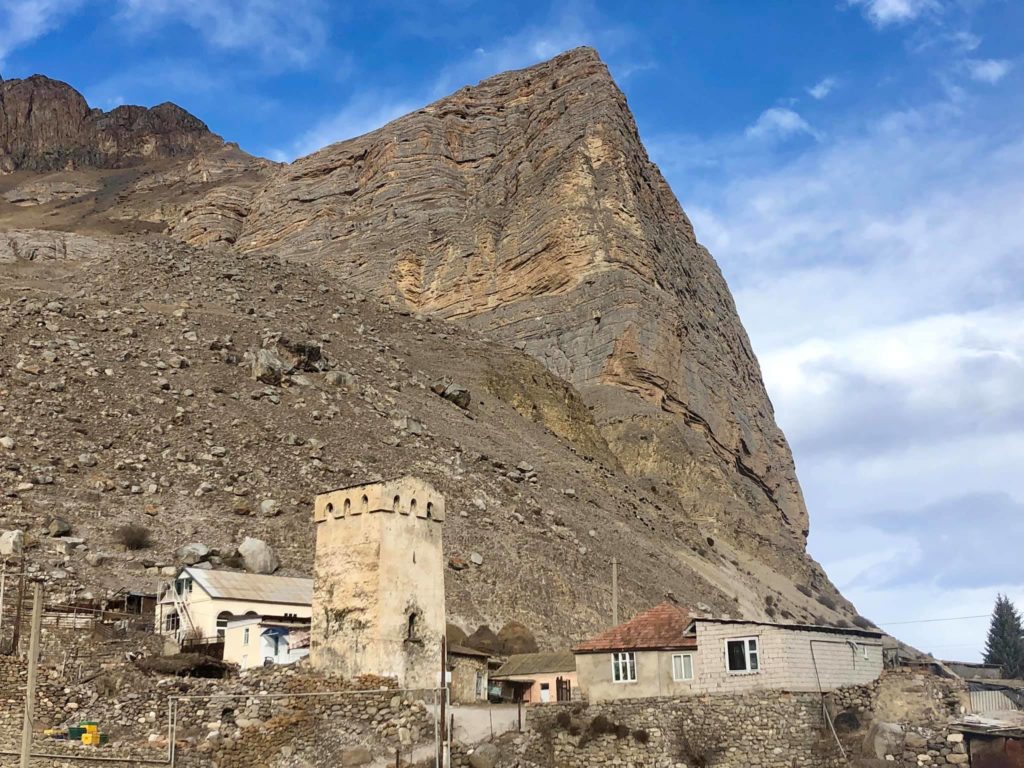
I have been to Kabardino-Balkaria before, but this is the first time I am travelling by car in winter. The nature here is certainly fantastic! Frankly speaking, the whole Caucasus never ceases to amaze with its beauty: Georgia, Chechnya, Ossetia and Abkhazia are just wonderful!
Travelling to such cool places by an equipped SUV is like moving with your own house, which has everything from the kitchen to the shower and toilet, and it is such a pleasure! However, I am still constantly catching myself thinking that it would be more great to get here in summer by motorbike! Yeah, the car allows you to travel in comfortable conditions at any time of the year, but it will never give you the feelings of unity with the outside world, the adrenaline and enjoyment that I get when travelling on my two-wheeled BMW. But that's a different story…
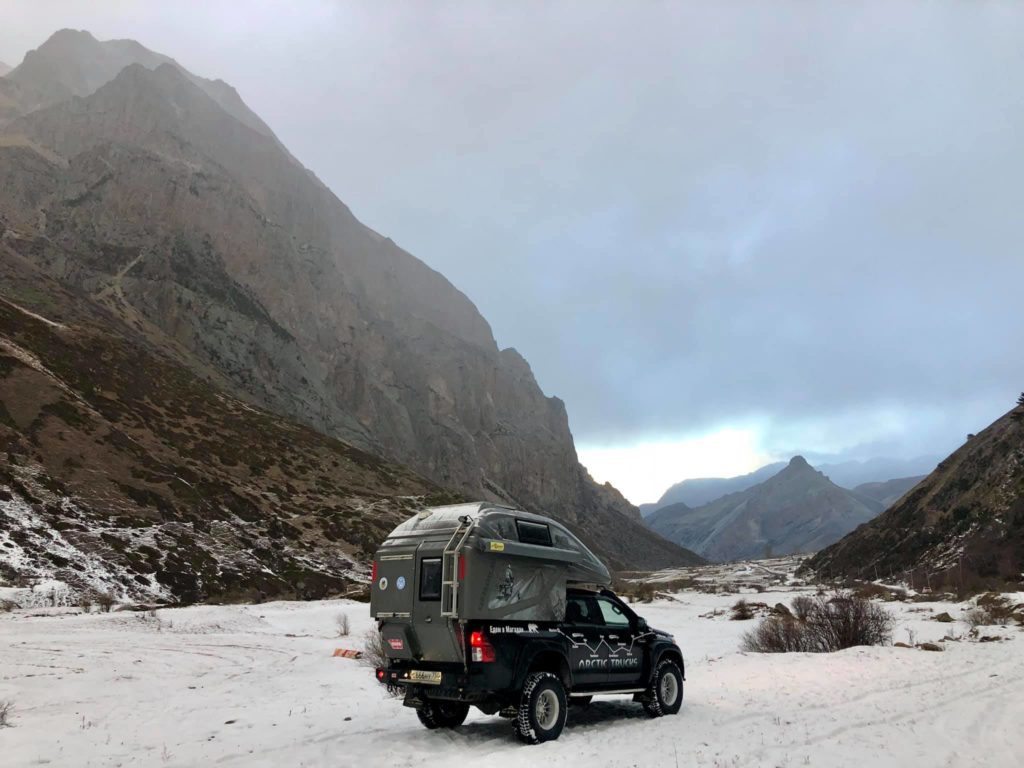
Today we continue our journey across Kabardino-Balkaria, exploring one of the most outstanding places in the Northern Caucasus, the Cherek Gorge. An incredibly beautiful road leads us to the top of the Caucasian ridge, in which the oldest Balkarian settlement Upper Balkaria is located at an altitude of 1100 m. This is a rather large village, where more than 4,000 people live now. Its historical background is tragic, as well as all the Balkarian people who were sentenced to repression in 1944. The historical part of the ancient settlement with stone walls of houses, narrow crooked streets and a watchtower has been preserved.
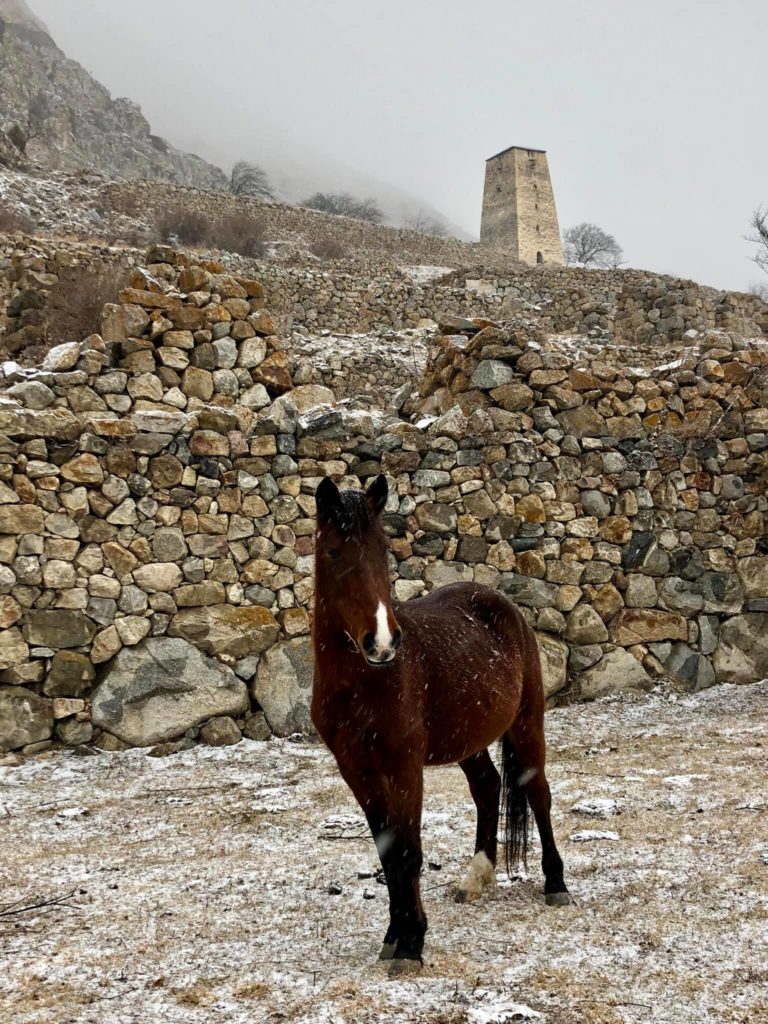
I have seen similar towers in the highland villages of Georgia.
The road along which we are slowly driving is unbelievably beautiful itself! Some sections of it are cut through sheer cliffs at a height of more than 500 m. And what fantastic views it offers! They are really breathtaking!
Somewhere in the middle part of the gorge, at an altitude of 800 m, there is another unique attraction: a cascade of Blue lakes!
We made a stop at the most well-known and unusual one. The lower Blue Lake is not an ordinary reservoir with crystal clear water. It is 257 metres deep! And its square is a little larger than a football field! This lake is like the Mecca for technical divers of Russia and not only. And during the New Year's holidays everything around is crowded with people and the mirror surface of the lake is bubbling with air bubbles exhaled by divers.
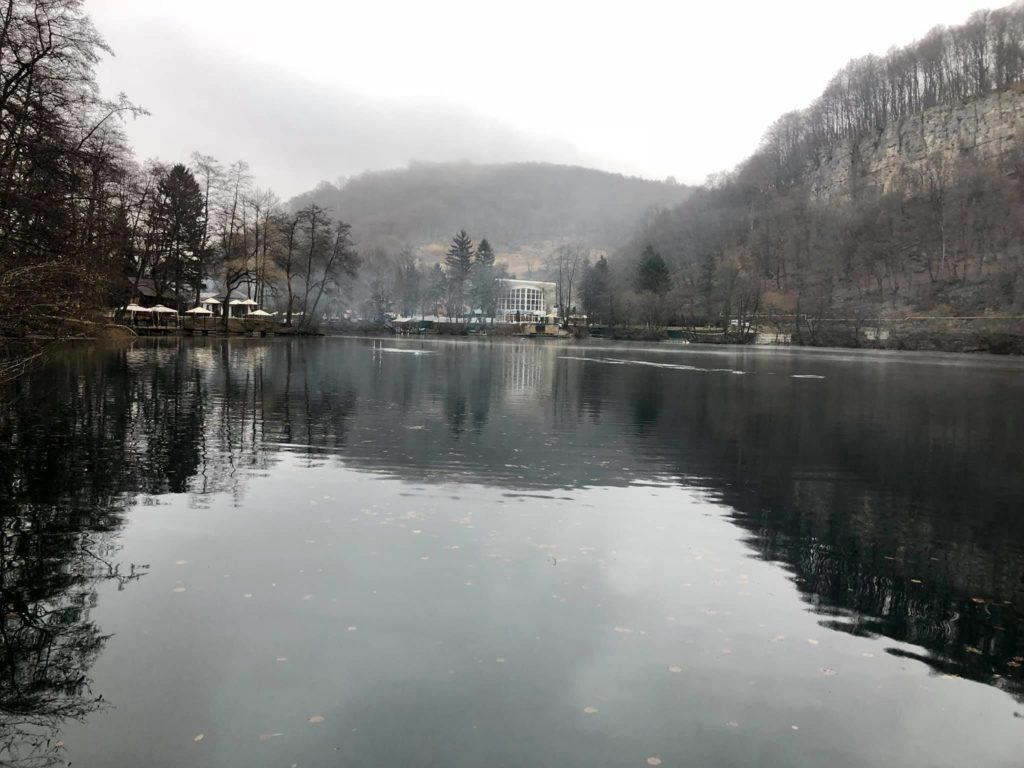
And here I have seen my acquaintances. This is Serega Gorpinyuk, an honored diver of Russia and Egypt, who seems to spend most of his life underwater and only occasionally he appears on the surface (just in order to change the oxygen tanks and take another group of student divers with him under the water). I was lucky to catch him just at the right moment.
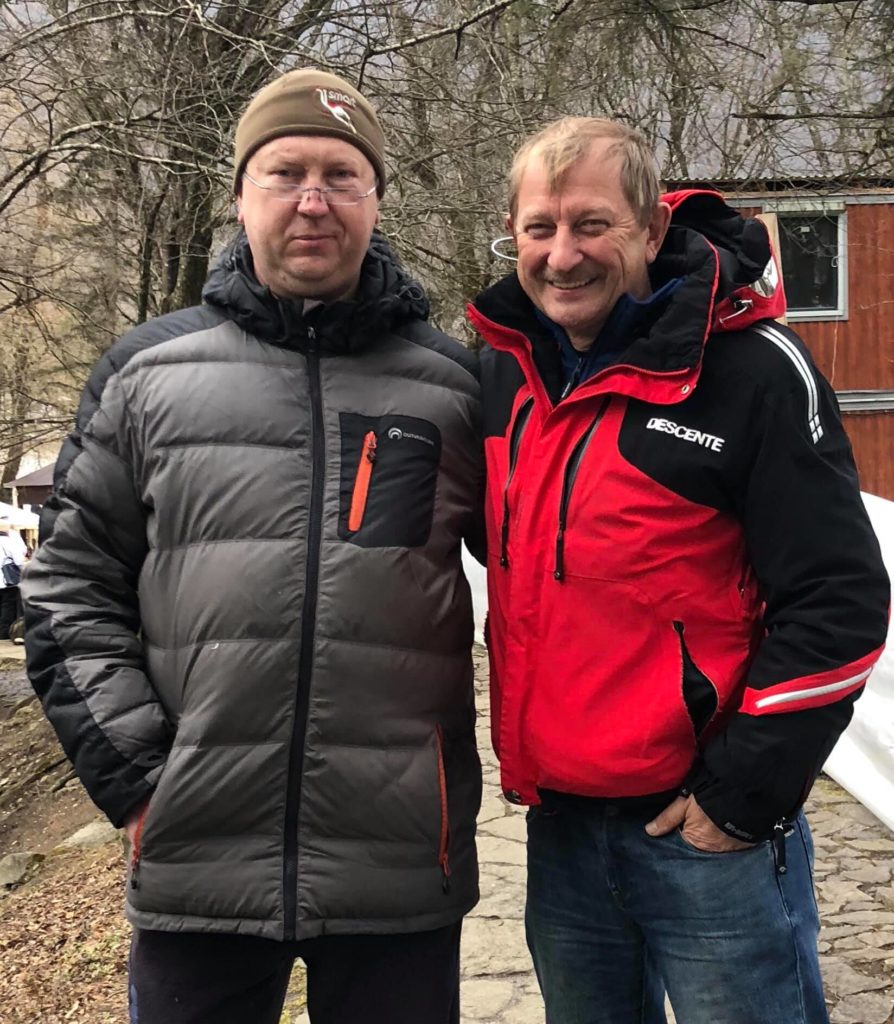
We must return here at the end of our journey, after conquering Elbrus, Cheget and other peaks, valleys and gorges! Otherwise it would mean that I carried a 30-kg bag of underwater equipment with me in vain! ;)
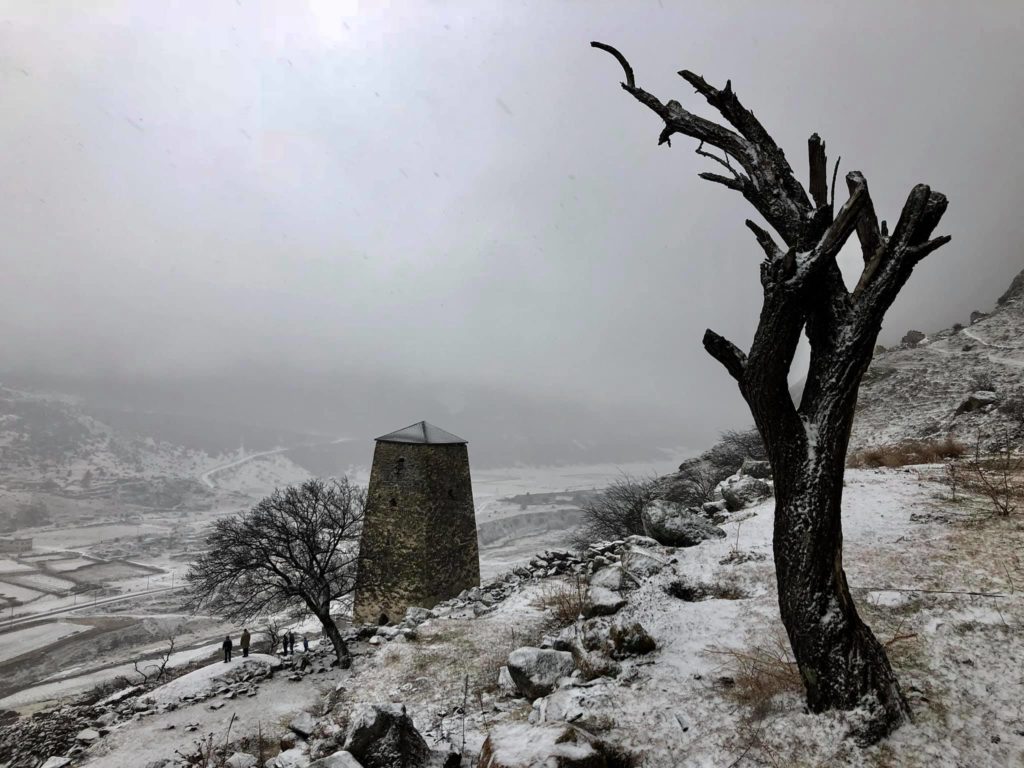
All the most beautiful places of Kabardino-Balkaria are located in five gorges. The longest of them is named Baksan and it leads to Elbrus. A beautiful highway winds like a ribbon along the stormy Baksan River, which starts somewhere behind the clouds, in glaciers of the highest mountain in Europe.
For more than ten years I have been fond of downhill skiing and I have probably visited all the famous ski resorts in Europe, but have reached Elbrus only now. Shame on me!
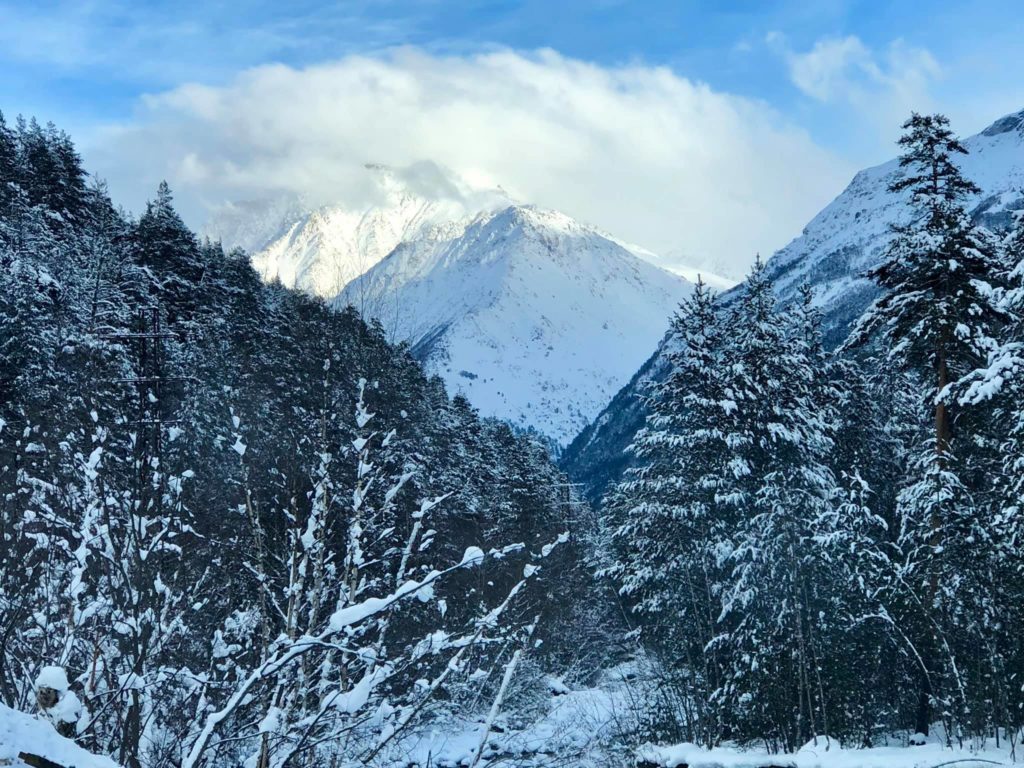
The hotel had been booked the day before via Booking. A double room in a small hotel in the village Terskol, which is located at the foot of the mountain, cost us five thousand roubles, including a simple breakfast and dinner. The lift is about two km away and we paid two hundred roubles for a local prior taxi service. The rooms are clean, there is a shower, a bath, hot running water, a TV-set… Well, everything was good enough to rate it in 2 stars. I didn't pay attention to such inconveniences as the complete absence of parking and lacking noise insulation in the rooms. Toyota was parked right in a snowdrift. The benefit of a reduced gear and four-wheel drive system allowed us not to be disturbed with this problem.
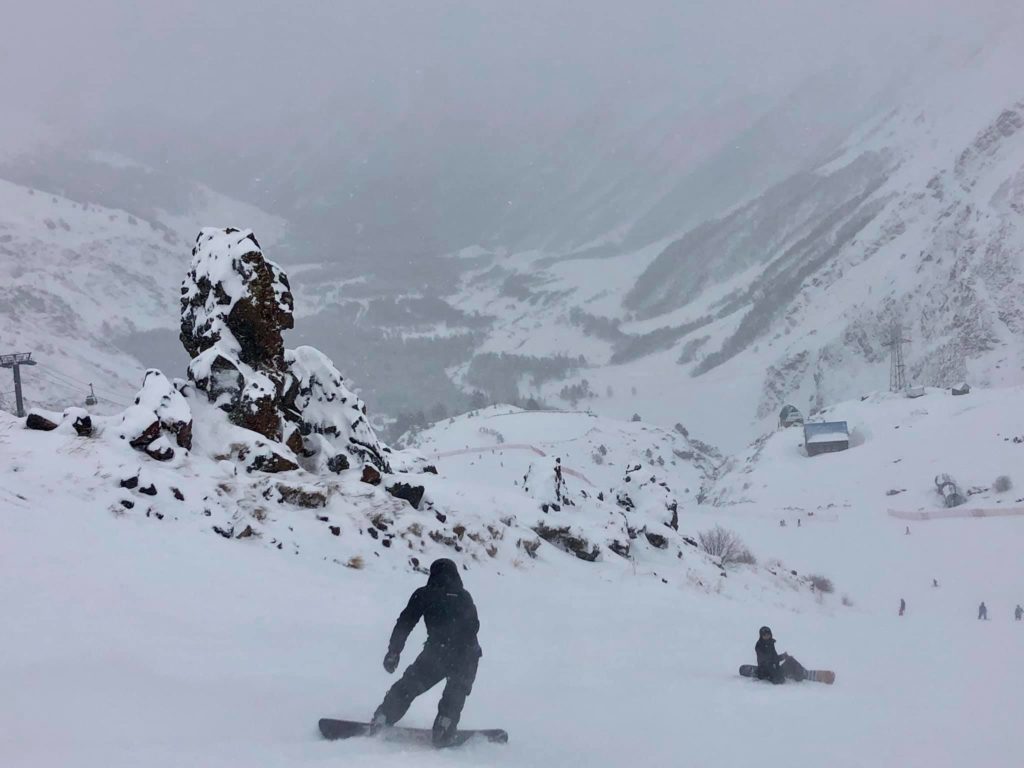
Hardly will you be able to park in the Azau plain near the lifts, so it's better to walk up or take a taxi, which is exactly what we did. The small area is crowded with people, cars, police and rental offices and cafés. Renting a full ski set will cost 1,350 roubles and a Full skipass for a day is 2600 roubles. You can go up three levels by a modern convenient lift in the cabin considered for 8 passengers. The highest of them, the Gara-Bashi station, is situated at the height of 3850m. I have never climbed so high on the ski slopes before!
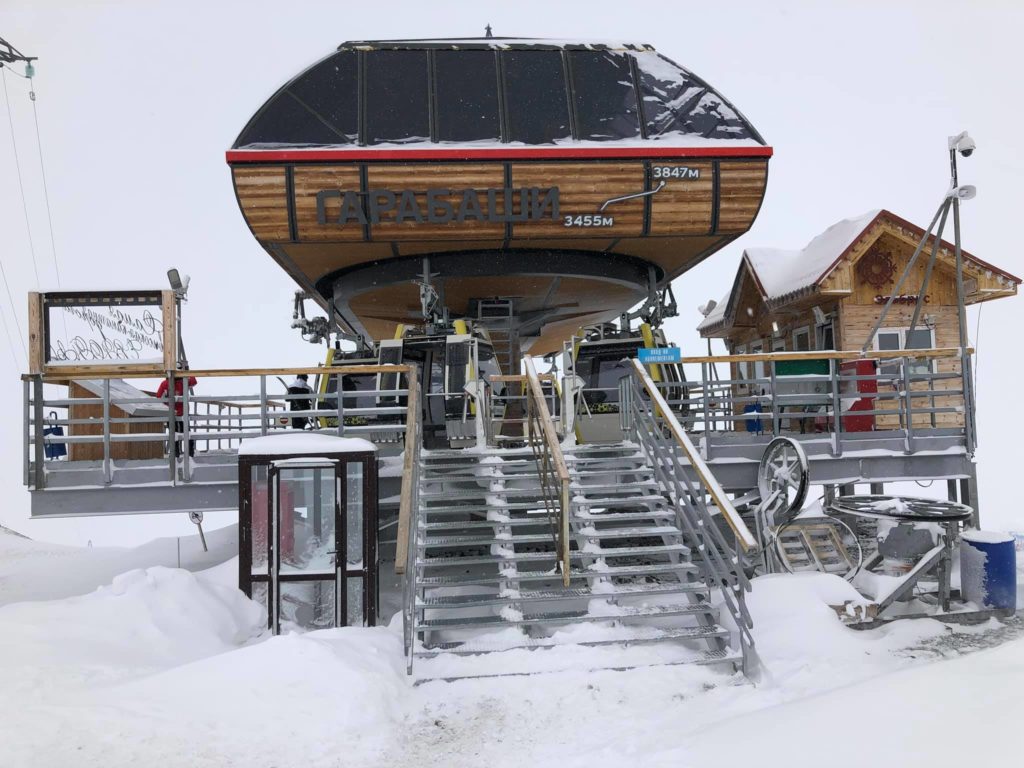
We were unlucky with the weather, since three days before our arrival it had been snowing incessantly, therefore, visibility was not very good. But the tracks themselves were rolled up and stayed in good condition. Of course, there is no special variety of the equipped slopes. This is not the Dolomites, ladies and gentlemen! :) A ten-minute drive from Azau in the village Cheget there are more trails on the slopes of the mountain of the same name and this is a paradise for freeriders who are not interested in riding along ordinary slopes.
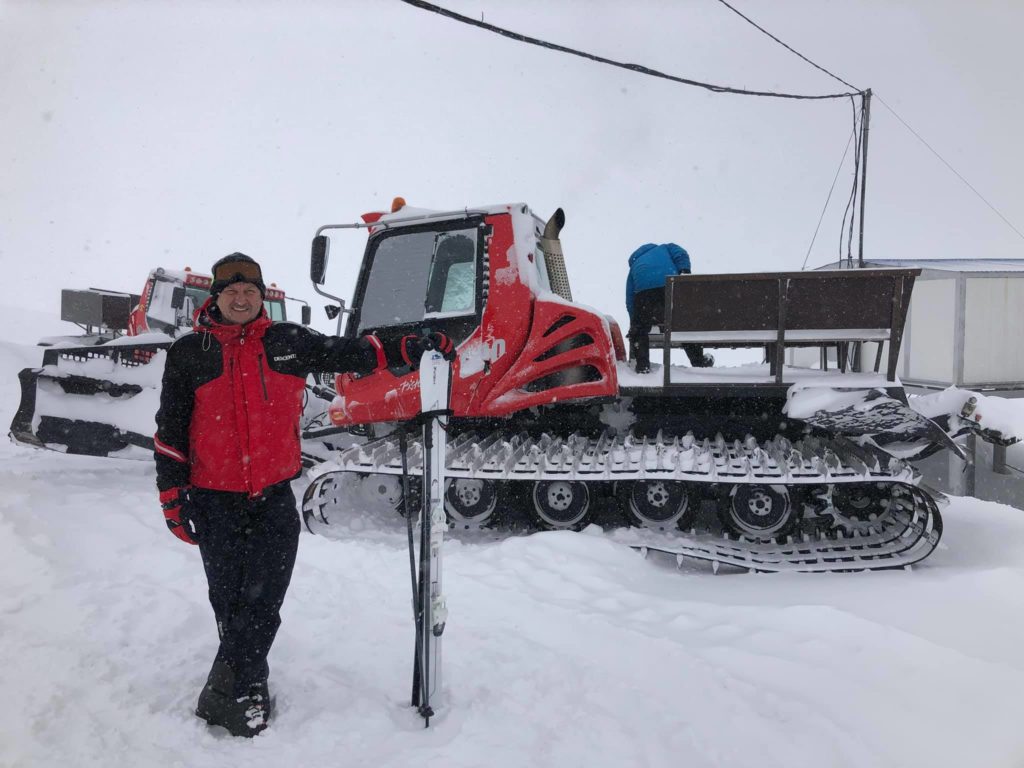
In the evening there isn't much to do in Terskol. Well, you can have dinner in one of the few cafes, in which the prices are not high (one dish costs 200…300 roubles on average), but there's a lack of good alcohol. However, if you are not a gourmet and usually satisfied with the local "homemade" wine or with the Hennessy XO cognac that costs 600 roubles, then you won't be upset. In another case, I recommend you to stock up on your drinks in advance.
All in all, in my opinion, you can go skiing at Elbrus resort and have fun for a couple of days, but no more. The rest of the time is better to be spent on travelling across the local incredibly beautiful mountain routes and visiting the sights (there will be enough of them for your return to KBR more than once)!
If you happen to drive around the Elbrus region along the Baksan Gorge towards Nalchik, then in front of the Former village you will see a small bridge across the river and a ground road leading to the mountains on the left. I recommend turning off the highway, you won't regret it, I promise! Of course, if you are travelling by a Mercedes S-class or some kinda of Bentley, then you shouldn't do it!
Immediately after the bridge, the road will lead you up and you will climb a steep serpentine, while the small stones will be flying from under the wheels. I advise you to connect the front axle and lower gear in advance, if you have one. And then, after a while, you will see a beautiful lake far below on the right, in a huge hollow. Its mirror surface reflects the mountains and rocks surrounding this amazing miracle of nature! This lake has a little strange (or maybe just an unusual for us) name, Gizhgit.
A narrow snow-covered road, on which even two motorbikers will hardly pass together, leads around the lake, alternately climbing up and steeply descending down to the very cut of the water. The only trace I saw on this snow-covered road was the trace of a shepherd riding a horse and a dog running next to him. In some places, the road is washed away by streams running down from the mountains. Such obstacles should be overcome with great care, especially when the track becomes so narrow that the right wheel goes along the very edge of the cliff and small stones crumble down with rustle.
The height is 1300 m. Having passed another rock, I saw some buildings in the distance.
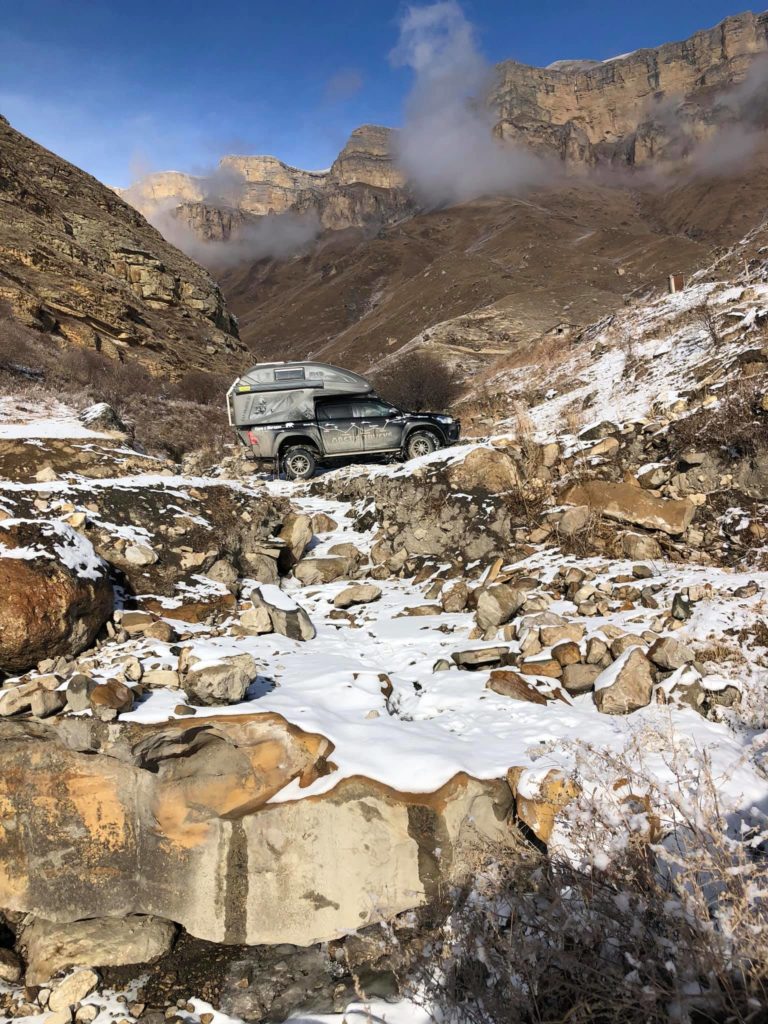
When I got closer, I realized that it was a sheepfold. Next to it there was a corral for sheep and several dilapidated buildings. There wasn't a single living soul. No traces, no people, no animals.
Driving over a small river running from the mountains right across the road, I filled a plastic bottle with the purest glacial water. The air temperature is -1°, but the sun is so bright that your eyes are tearing and it gets hot in the car.
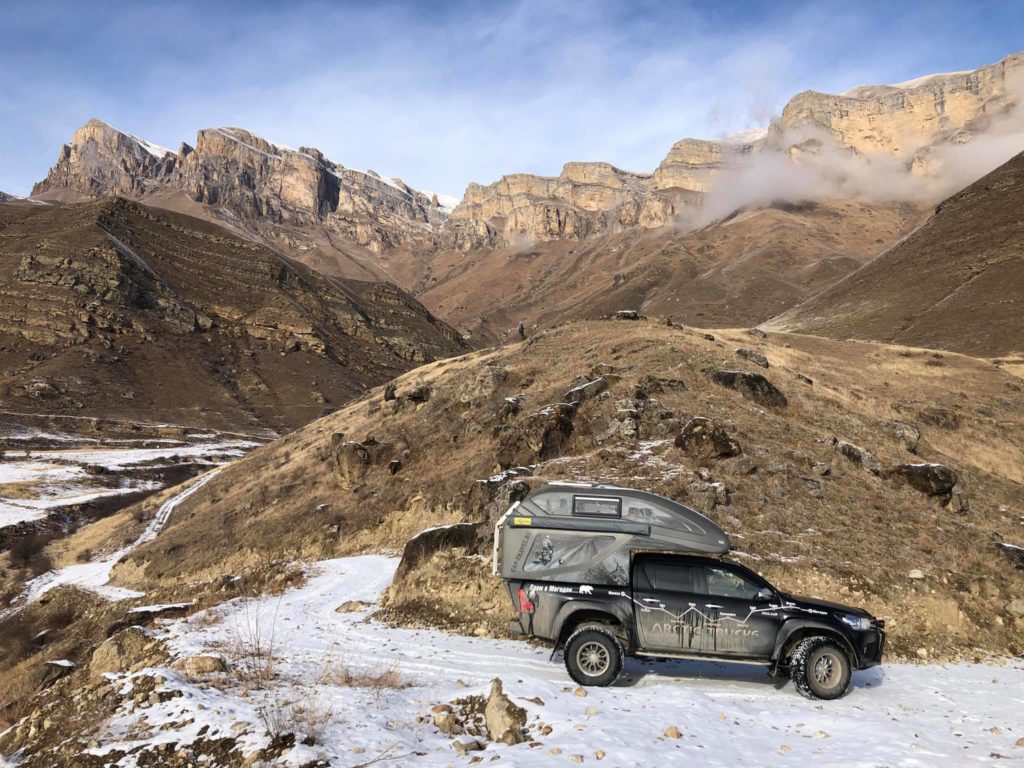
The distance to the highway around Gizhgit and back was a little more than ten kilometers, but we drove it for two hours, making stops almost every 500 metres in order to take another photo or just admire the beauty of this unique place of the Northern Caucasus.
Kabardino-Balkaria is a very small and poor republic with a population of less than a million people. It takes place at the very end of the list of subjects of the Russian Federation in terms of economic development and GDP per capita. But in terms of the number of unique natural attractions in it, I think, KBR must be at the top of this list.
The high-altitude plateau of Kinzhal (or Kanzhol) is an example of such beautiful sights. If you turn off the highway leading to Elbrus along the Baksan gorge to the village of Kendelen and drive through it, then you will get to the ground road leading to the top point of this plateau 2850 m high. (43°35'33.61" N 42°43'19.96"E) This is not an easy track, as it is replete with steep ascents and descents, rocky areas and is quite long. After 53 km you will get to an unrealistically amazing place. This is a fairly large platform on the edge of a giant cliff, which you can see a crazy view of Elbrus and all the other highest peaks of Kabardino-Balkaria from.
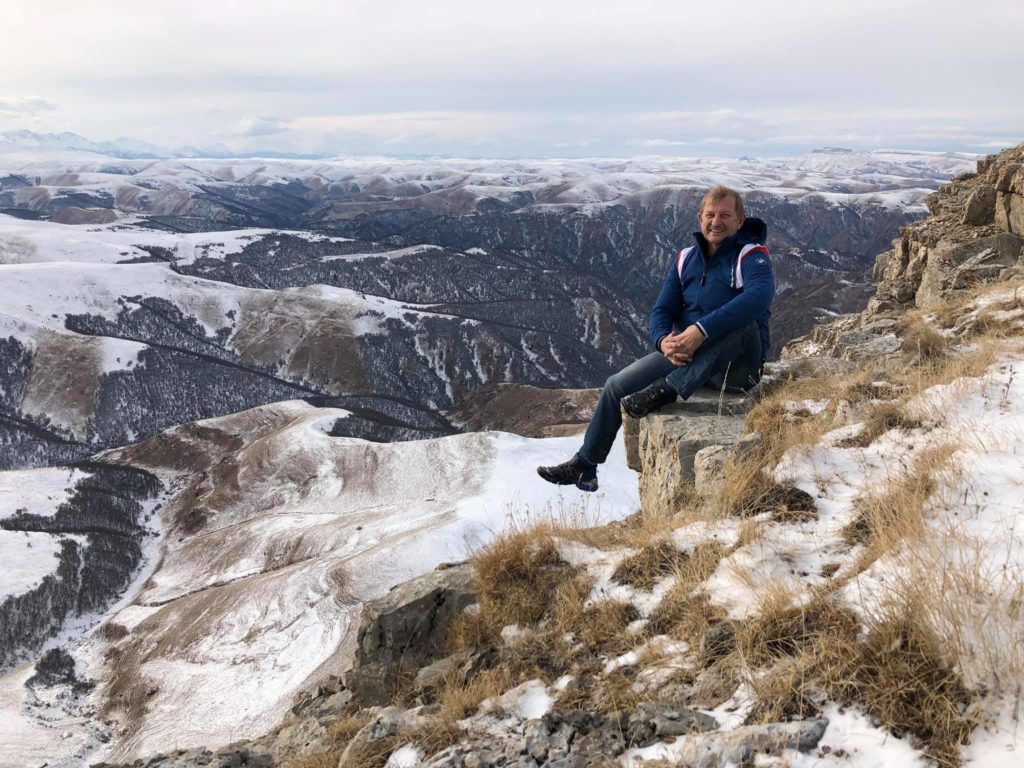
You will stand so high that an endless white blanket of clouds, covering gorges and valleys and merging with the sky at the horizon, will be somewhere far below. And only the top of Elbrus and other five-thousand-metre peaks will shine with their snow-white caps in the background of the light blue sky. The main thing is to be lucky with the weather.
There are many interesting legends associated with this plateau and the name Kan-Zhol itself is translated as "bloody road". These places are not suitable for housing, so the area here is quite deserted. Only in the warm season shepherds bring their flocks to the highlands. And the terrible name of the road comes from the fact that when cattle were led along it, the animals broke their hooves on the rocky ground, sprinkling it with blood.
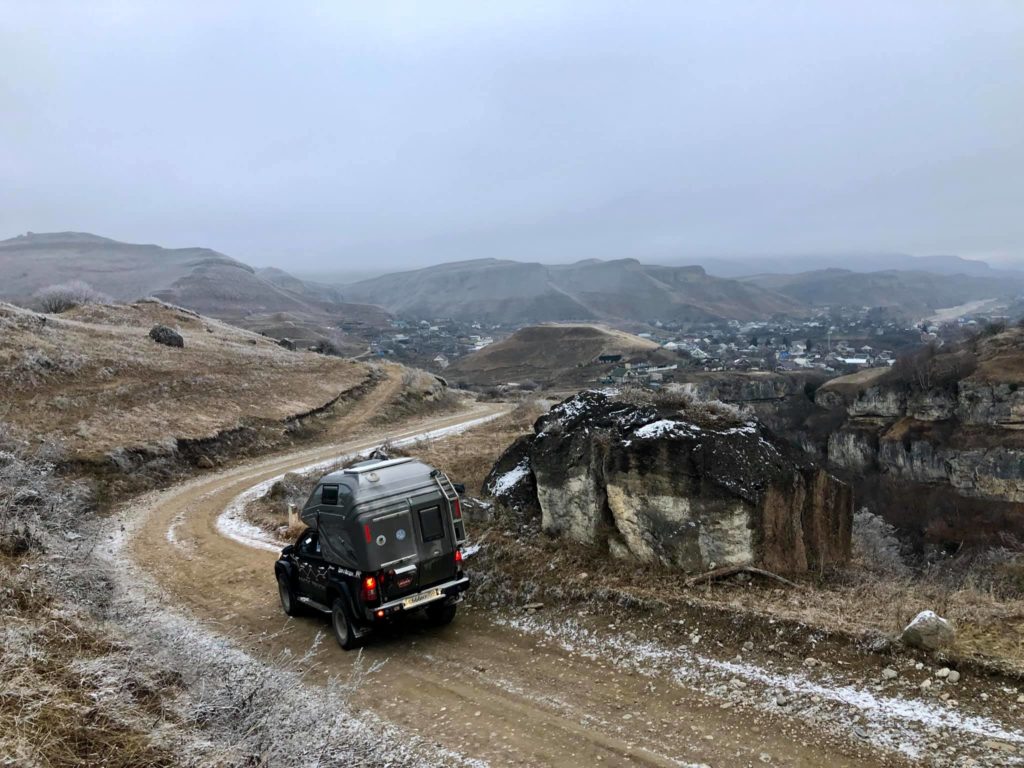
And if you turn off the "bloody road" at the fork (43°37'24.93"N 43°03'10.37"E) towards the village of Kamennomostskoye, then in a distance of 17 km you will reach another unique attraction — the Shadhurei Lakes (Shanghore) (43°42'29.26"N 43°04'27.4"E). By the way, some episodes of the movie "Sannikov Land" were filmed here. And if you drive 20 km from this village along the Malka river, you can see the gorgeous Gedmyshkh Falls, one of the most picturesque waterfalls of the North Caucasus. (43°43′10″N 42°50′38.5″E)]
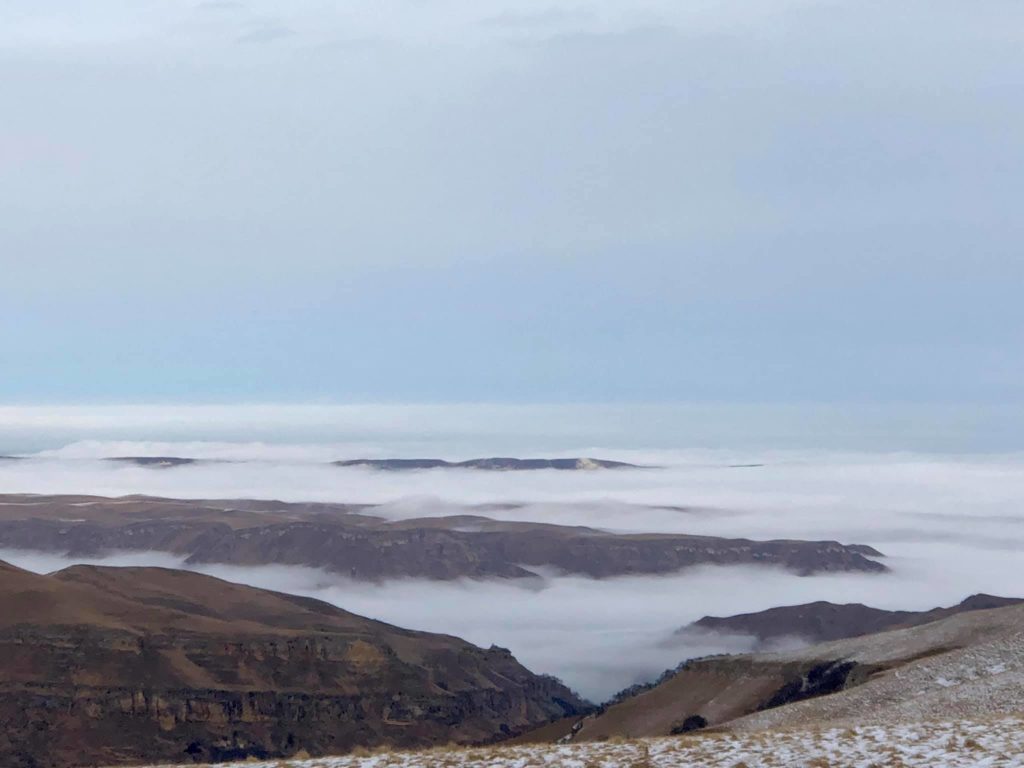
Unfortunately, this time we didn't manage to get to it, since the day was over and we had to go back. Anyway, it is the reason to return again and continue exploring the picturesque attractions of Kabardino-Balkaria!
Have you ever hovered over the abyss? No, this is not the abyss when you are standing on the edge of a precipice or flying down with a parachute. It feels completely different there.
This abyss is like a black hole and you hover over it as if in outer space. You hear utter silence and feel weightlessness. Nothing around. Only a bare dark rock that goes vertically down into the underworld, and if you swim away from it and go lower (60 m or even deeper), then you will find yourself in complete darkness and only a narrow beam of your flashlight, rushing from side to side, would suddenly slip along a black stone ledge and would be dissolved in the depths of a giant well.
This is a Blue lake.
It is charming and terrible at the same time, like in the drinking folk song about Queen Tamar of Georgia: "As an angel of heaven she's beautiful and as a demon she's insidious and evil".
It hides many myths and legends in its impregnable depth. Not a single person has reached its bottom, although many have tried. Some of the bravest and most experienced stayed there forever…
In 2012 the world famous English diver Martin Robson tried to conquer the Blue Lake, but having reached a depth of 209 m, he hardly saved his life.
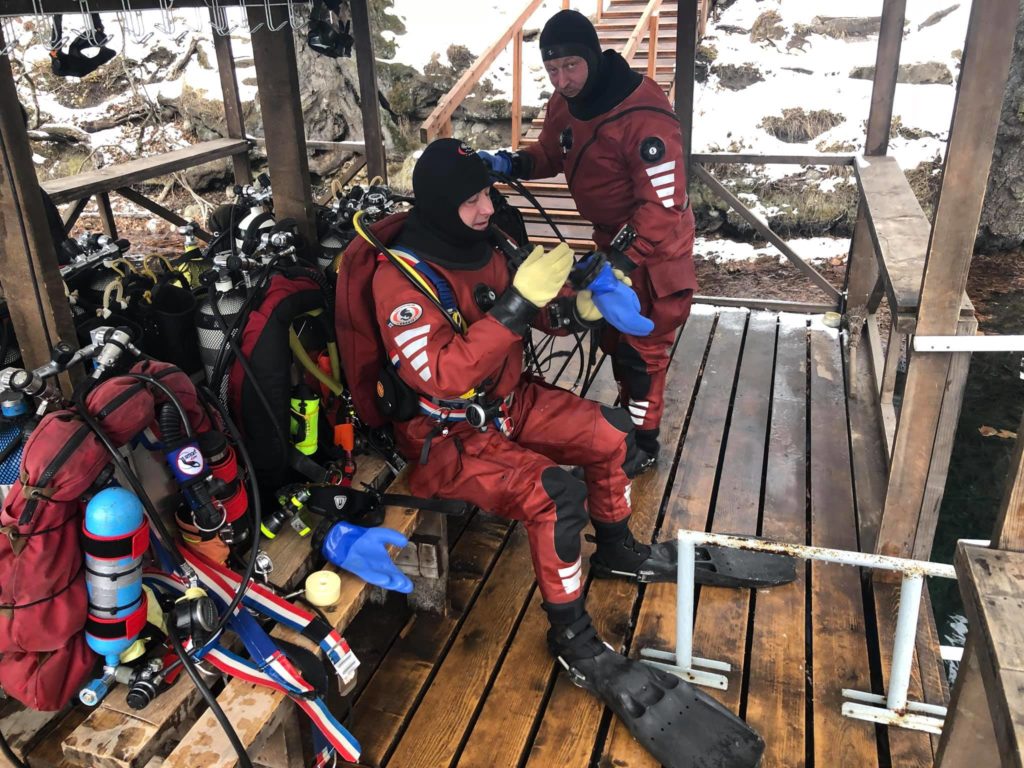
It is said that the depth of the lake is 279 metres, although the locals claim that it has no bottom. Can you imagine a well about 300 m deep? No? So cannot I. Do you know what extent of environmental pressure a person will experience at such a depth? About 30 atm units! To be more precise, -29 atm. For example, the car tire pressure equals about 2.5 atm. Diving to such depths is really more difficult and dangerous than going into outer space.
To the 20-metre depth from the dive site you follow the dump covered with fallen leaves, tree trunks and a light green web of seaweed hung on them. That's a very unusual landscape! The water is clear and the colours are so bright. We go further and the gentle dump abruptly ends and turns into a sheer cliff. The depth goes 30... 40 metres, the colours fade, everything turns gray. There is a small stone on the ledge of the cliff. I take it and, after making a couple of strokes with my flippers, let it go. I see this flat stone slowly fall into the black abyss, turn round and disappear in a few seconds. I'm trying to figure out how long it will take it to reach the bottom. Probably, a minute. Hanging over the water abyss, I freeze and stop breathing not to hear the noise of exhaled air. I look down into the blackness of the underworld that swallowed the stone… I need to get rid of the idea of going 60…70 metres lower, as I know that the depth is treacherous: the stronger your desire to go further, the deeper it becomes. And today we don't have such a challenge. What's more the configuration of the equipment does not suit these conditions. Our plan is completely different. Having made a full circle along the wall, we return to the starting point. At the depth of 15 m I notice a granite slab with a portrait of a man in underwater gear. This is the instructor, whose name is Victor Melekhin. He died in 2017. And he's not the only one here, unfortunately…
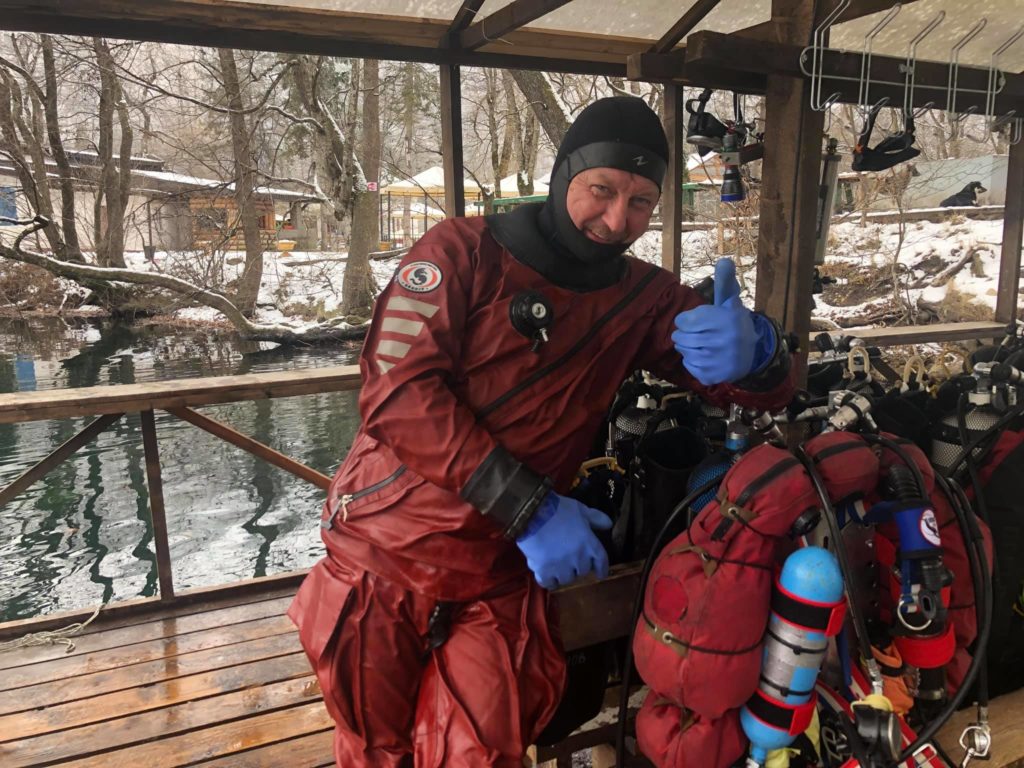
We made two dives in Blue Lake, then said goodbye to the owner of the Underwater Research Center and just a wonderful man, Edik Khuazhev, who gave us the opportunity to experience this adventure, and continued our journey across the Caucasus.
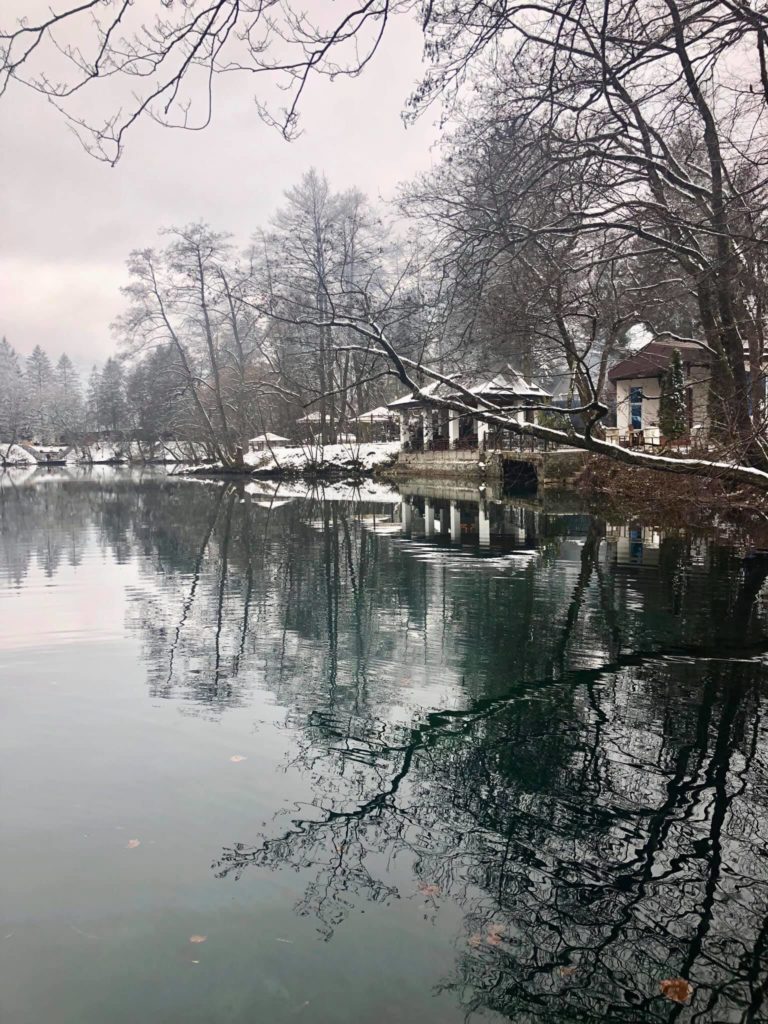
 Cap-travel.ru
Cap-travel.ru